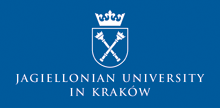Speaker
Description
Introduction
In 2016 the development of Total Body PET (TB-PET) system with a $2$ m long axial FOV at UCDavis (California) and a $70$ cm-$1,4$ m
long axial FOV at UPENN (Philadelphia) has been initiated and United imaging (together with UCDavis) has
recently launched the first Total Body PET system for clinical imaging (FDA approved).
The aim of this work is to try to find a more cost effective way to build a TB-PET scanner.
In particular we investigated the possibility of a chess-like arrangement of detectors, by splitting the ring detectors into an even detectors ring and an odd.
Effectively by reducing the number of detectors by half and extending the axial FOV as much.
Material and Methods
GATE Monte Carlo simulations were incorporated for the simulation process and tools from STIR image reconstruction toolkit for the sinogram processing and image reconstruction.
Three configurations were considered. A long axial FOV scanner (axial length 626 mm), a split ring configuration, where interchangeably rings miss either the odd or the even detectors (axial length 1252 mm) and finally a TB PET scanner with full rings (axial length $1252$ mm). The configurations are named: Config.A, Config.B and Config.C, correspondingly. The three configurations are illustrated in figure (\url{https://figshare.com/s/2f6c1a09a38c2916f86d}).
Briefly, the system model is composed by blocks with $8 \times 8$ LYSO crystals with size $4\times 4$ mm$^2$.
Each system module either had one block (config.A), a combination of block and gap (config.B) or two blocks (config.C).
For the comparison and evaluation of the three configurations an adaptation of the NEMA NU-2012 protocol, was used.
In particular the count losses phantom which in the standard protocol has length of 700 mm was extended to 1500 mm, in order to provide a fair comparison between the long scanners and highlight the benefits of the longer axial length.
Results
In terms of number of detected prompts config. C was found far more efficient, as it shares the longest length with config. B but without gaps.
The config. A was found slightly better than config. B. Showing that the axial expansion of the scanner does not fully compensate for the introduction of the gaps (Figure: (\url{http://figshare.com/s/2bab7a8ca4cd906a7452}).
As illustrated in Fig.\url{https://figshare.com/s/e51b4924e0a7ad7b5972} in terms of kcps the NECR of Config. C is superior to the rest of configurations.
However the peak is located in a lower activity concentration than the rest.
Comparison between Config. B and A. reveals that the NECR of config. A is quite better, something that was not hinted by the number of detected prompts.
This shows that the true events loss, due to the gaps is proportionally more significant than for the scattered and random events, which are less affected.
In Fig~\url{https://figshare.com/s/e51b4924e0a7ad7b5972} the NECR of the PET scanner with classic axial FOV (240 mm), was included in order to highlight the benefits in sensitivity of the long scanners over the shorter.
Further, this is shown in Fig.~\url{https://figshare.com/s/22a517d33c10156a0c59} where reconstructed images (OSEM 12sub. 60 iterations), of the short scanner and Config. A., are demonstrated. The acquisition was of a normal FDG biodistribution of 10 seconds. In addition, to the wider FOV the longer scanner offers substantially smoother image.
Conclusions
An alternative, cost efficient design for the TB-PET scanner using a chess-like pattern of detectors was evaluated, in terms of count losses and compared to a compact configuration having the same number of detectors and a configuration with the same axial length and double the detectors.
It was found that although the impact on the counting ability of the scanner is not significant the NECR is significantly reduced. This hints that the detected true events suffer greater losses than the random and scattered. Of course, this does not undermine the benefits of the increased FOV.
Future work
Our ability to reconstruct images of long PET scanner reaches the 700mm. We plan to further extend that using more efficient memory management.

